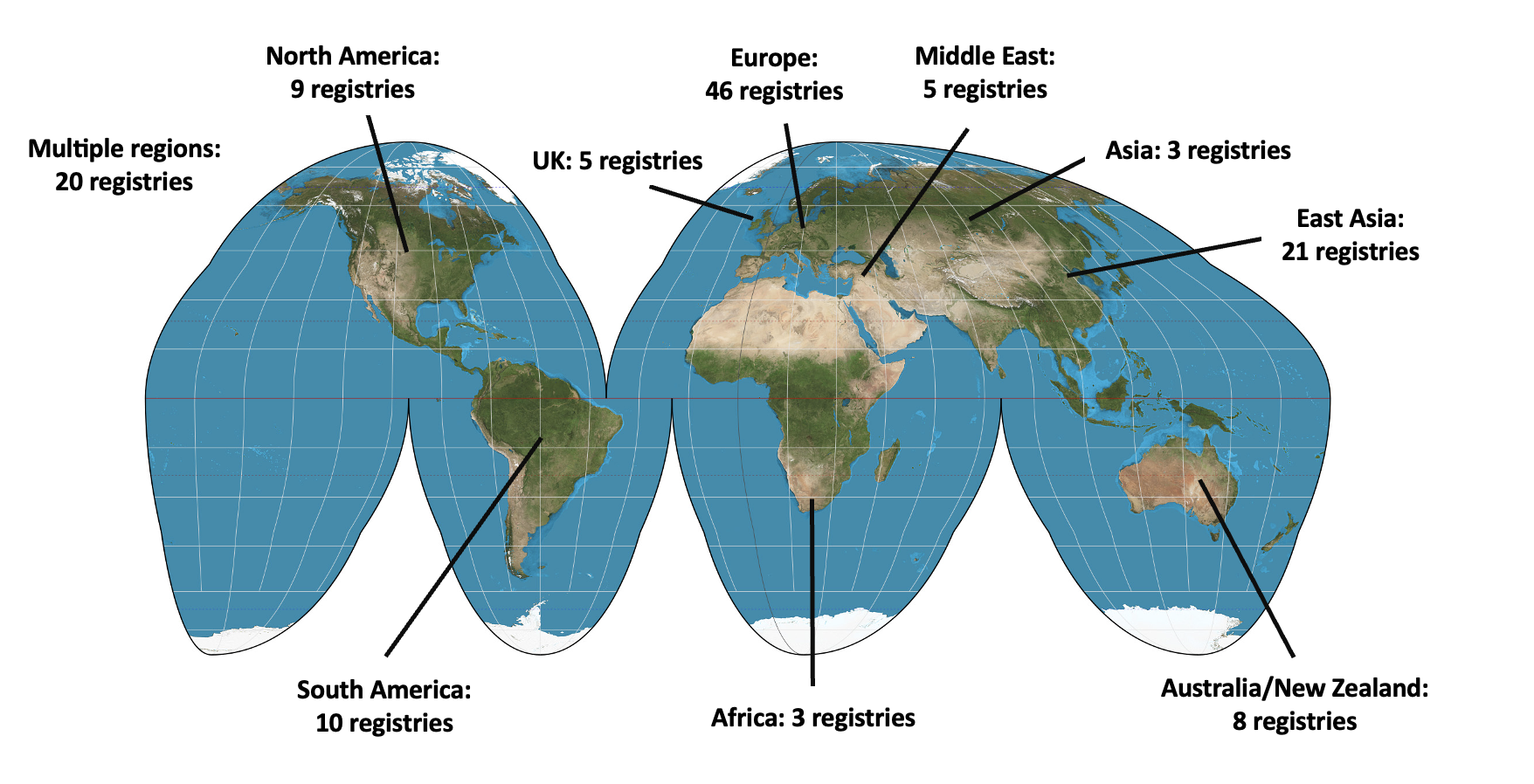
Organ donation and transplantation registries across the globe: A review of the current state
Christie Rampersad1,2, Curie Ahn3, Chris Callaghan4, Beatriz Dominguez-Gil5, Gustavo F Ferreira6, Vivek Kute7, Axel O Rahmel8, Minnie Sarwal9, Jon Snyder10, Haibo Wang11, Germaine Wong12, S. Joseph Kim1,2.
1Ajmera Transplant Centre, University of Toronto, Toronto, ON, Canada; 2Institute of Health Policy, Management and Evaluation, Dalla Lana School of Public Health, University of Toronto, Toronto, ON, Canada; 3Division of Nephrology, Seoul National Medical Hospital, Seoul, Korea; 4Department of Nephrology and Transplantation, Guy's Hospital, Guy's and St Thomas' NHS Foundation Trust, London, United Kingdom; 5Organización Nacional de Trasplantes, Madrid, Spain; 6Transplant Unit-Santa Casa Juiz de Fora, Av. Barão do Rio Branco, Juiz de Fora, Brazil; 7Department of Nephrology and Transplantation, Institute of Kidney Diseases and Research Center, Dr. H L Trivedi Institute of Transplantation Sci, Ahmedabad, India; 8Deutsche Stiftung Organtransplantation, Frankfurt am Main, Germany; 9Division of Multi-Organ Transplantation, Department of Surgery, University of California San Francisco, San Francisco, CA, United States; 10Scientific Registry of Transplant Recipients, Hennepin Healthcare Research Institute, Minneapolis, MN, United States; 11China Organ Transplant Response System (COTRS), National Health Commission of the People's Republic of China, Beijing, People's Republic of China; 12Department of Renal and Transplantation Medicine, Westmead Hospital, Sydney, NSW, Australia
On behalf of the Global Data Harmonization Committee of The Transplantation Society.
Background: The current landscape of organ donation and transplantation (ODT) registries is not well established. This narrative review sought to identify and characterize the coverage, structure, and data capture of ODT registries globally.
Methods: We conducted a literature search using Ovid Medline and web searches to identify ODT registries from 2000 to 2023. A list of ODT registries was compiled based on publications of registry design, studies, and reports. Extracted data elements included operational features of registries and the types of donor and recipient data captured.
Results: We identified 129 registries encompassing patients from all continents except Antarctica. Most registries were active, received funding from government or transplant professional societies, were national in scope, included both adult and pediatric patients, and reported patient-level data. Registries included kidney (n = 99), pancreas (n = 32), liver (n = 44), heart (n = 35), lung (n = 30), intestine (n = 15), and islet cell (n = 5) transplants. Most registries captured donor data (including living vs. deceased) and recipient features (including demographics, cause of organ failure, and post-transplant outcomes) but there was underreporting of other domains (e.g., donor comorbidities, deceased donor referral rates, waitlist statistics).
Conclusions: This review highlights existing ODT registries globally and serves as a call for increased visibility and transparency in data management and reporting practices. We propose that standards for ODT registries, a common data model, and technical platforms for collaboration, will enable a high-functioning global ODT system responsive to the needs of transplant candidates, recipients, and donors.

CR is supported by a Kidney Research Scientist Core Education and National Training Program (KRESCENT) salary award co-funded by the Kidney Foundation of Canada, the Canadian Society of Nephrology, and the Canadian Institutes of Health Research (CIHR). The funders had no role in defining the content of this article.
[1] Solid organ transplantation
[2] Organ donation
[3] Registries
